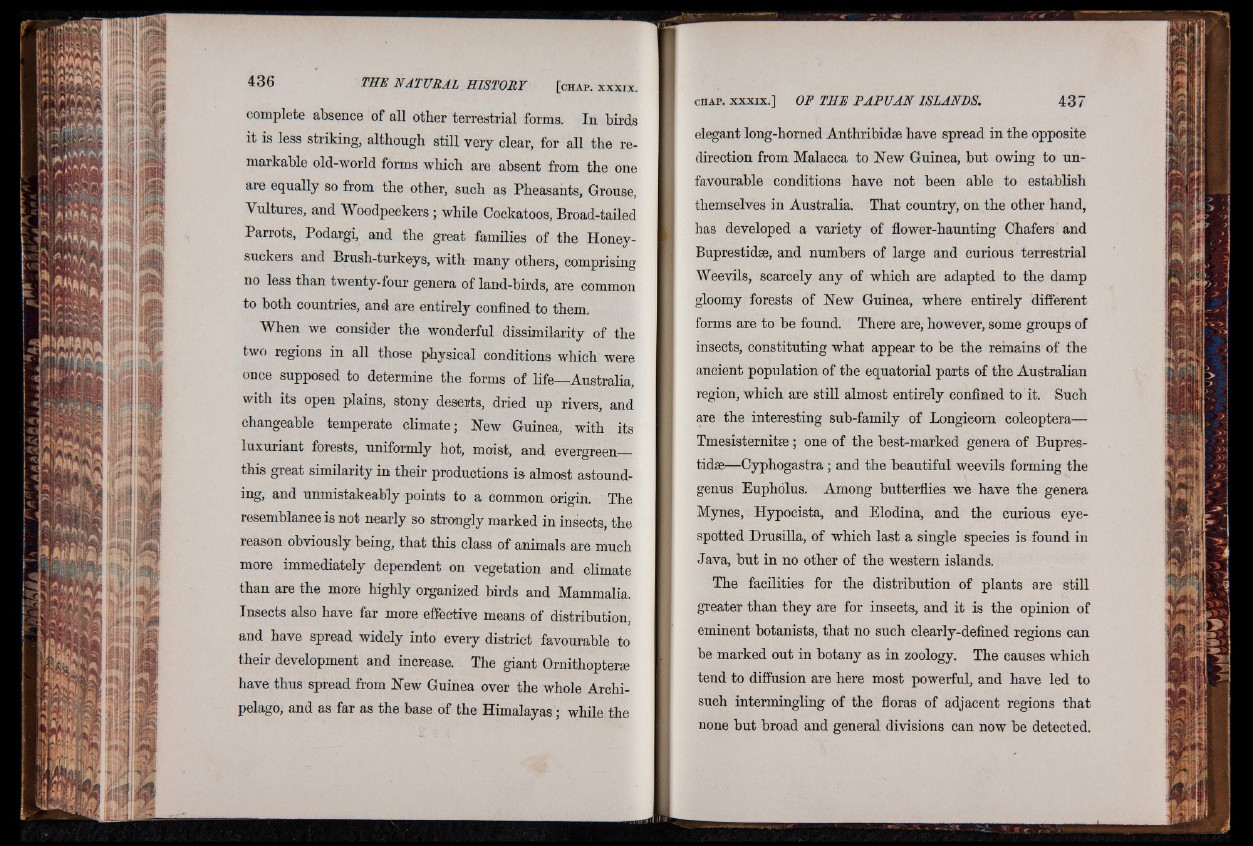
complete absence of all other terrestrial forms. In birds
it is less striking, although still very clear, for all the remarkable
old-world forms which are absent from the one
are equally so from the other, such as Pheasants, Grouse,
Vultures, and Woodpeckers ; while Cockatoos, Broad-tailed
Parrots, Podargi, and the great families of the Honey-
suckers and Brush-turkeys, with many others, comprising
no less than twenty-four genera of land-birds, are common
to both countries, and are entirely confined to them.
When we consider the wonderful dissimilarity of the
two regions in all those physical conditions which were
once supposed to determine the forms of life—Australia,
with its open plains, stony deserts, dried up rivers, and
changeable temperate climate ; New Guinea, with its
luxuriant forests, uniformly hot, moist, and evergreen_
this great similarity in their productions is almost astound-
ing, and unmistakeably points to a common origin. The
resemblance is not nearly so strongly marked in insects, the
reason obviously being, that this class of animals are much
more immediately dependent on vegetation and climate
than are the more highly organized birds and Mammalia.
Insects also have far more effective means of distribution,
and have spread widely into every district favourable to
their development and increase. The giant Ornithopteræ
have thus spread from New Guinea over the whole Archipelago,
and as far as the base of the Himalayas ; while the
elegant long-homed Anthribidse have spread in the opposite
direction from Malacca to New Guinea, but owing to unfavourable
conditions have not been able to establish
themselves in Australia. That country, on the other hand,
has developed a variety of flower-haunting Chafers and
Buprestidse, and numbers of large and curious terrestrial
Weevils, scarcely any of which are adapted to the damp
gloomy forests of New Guinea, where entirely different
forms are to be found. There are, however, some groups of
insects, constituting what appear to be the remains of the
ancient population of the equatorial parts of the Australian
region, which are still almost entirely confined to it. Such
are the interesting sub-family of Longieom coleóptera—
Tmesisternitae; one of the best-marked genera of Bupres-
tidse—Cyphogastra; and the beautiful weevils forming the
genus Euphólus. Among butterflies we have the genera
Mynes, Hypocista, and Elodina, and the curious eye-
spotted Drusilla, of which last a single species is found in
Java, but in no other of the western islands.
The facilities for the distribution of plants are still
greater than they are for insects, and it is the opinion of
eminent botanists, that no such clearly-defined regions can
be marked out in botany as in zoology. The causes which
tend to diffusion are here most powerful, and have led to
such intermingling of the floras of adjacent regions that
none but broad and general divisions can now be detected.